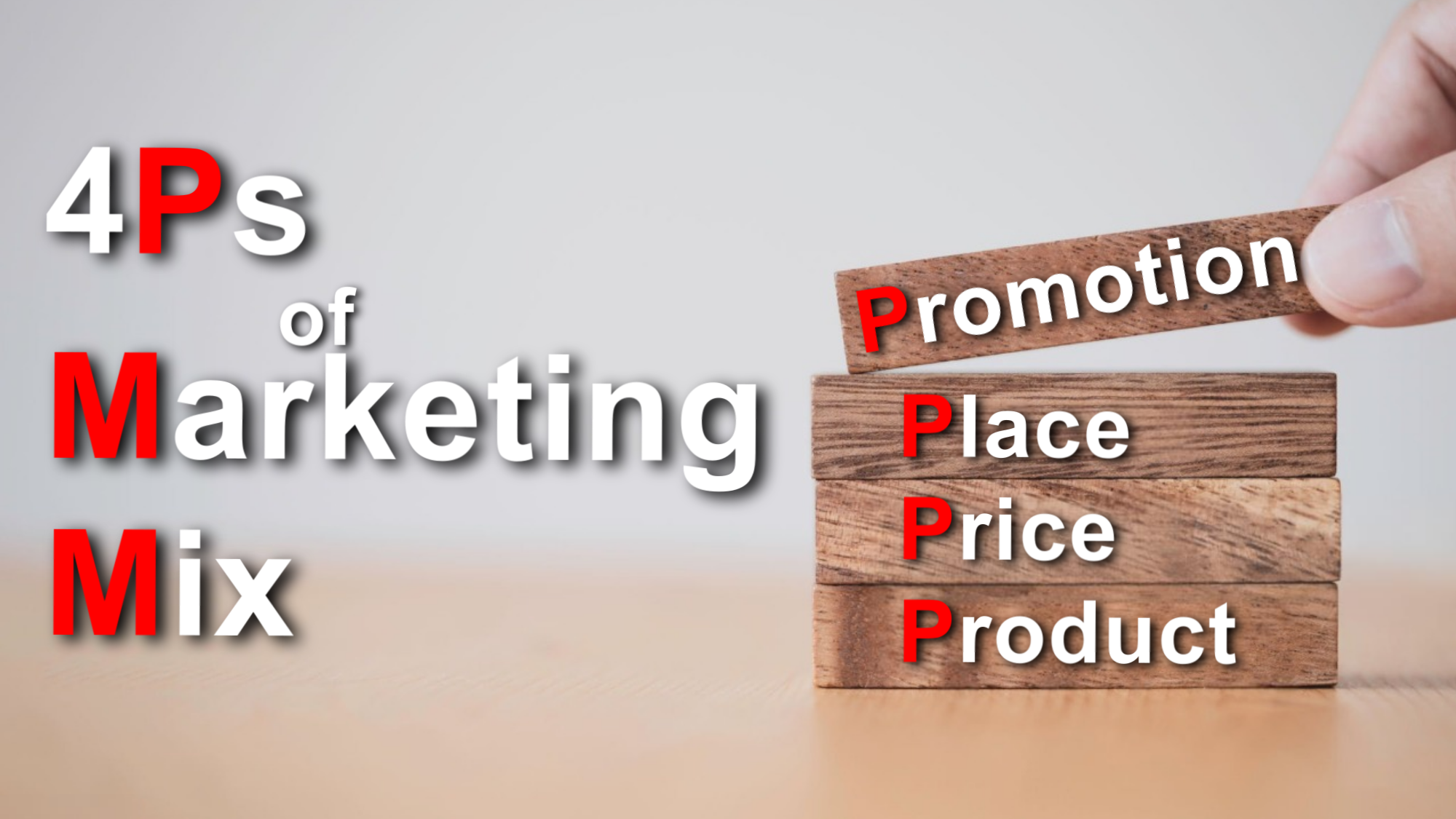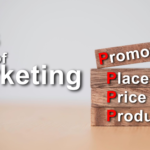Introduction to the 4Ps of Marketing Mix
The 4Ps of marketing mix viz. Product, Price, Place, and Promotion are the four most important pillars in any business. We all know that without a single one, there is no long-term viable business. Imagine you’re a shoe retailer in a competitive market. Your products are good (actually, customers love that), furthermore, prices are affordable for most of the people relative to their monthly per capita income, and additionally, you promote your store through billboard ads and organizing local events. But because your store is located at the city outskirts, far from your target customers’ location, your monthly sales are relatively low despite having good products, affordable prices, and strong promotion. This scenario highlights how crucial the 4Ps of marketing mix are in overcoming challenges and driving business growth.
This is how most businesses are measurable in today’s age. One way or another, they struggle to find a perfect balance between the four.
In the next five minutes, I’m going to present many such examples in front of you. And additionally, I will describe another lesser-known 3Ps of marketing mix. So, let’s get started. Remember, the 4Ps of marketing mix are the cornerstone of any successful marketing strategy.
Deep Dive into the 4Ps of Marketing Mix
1) Product:
The first element in the marketing mix is Product or more precisely goods/items traded with the customer in exchange of money. It’s the first thing represented as an identity from the business. Generally, visually appealing and feature-rich products/services are often perceived as premium.
Therefore, some companies strive to maintain their premium brand appeal by making their products/services beautiful and unique than the rest.
Product is by far one of the most important assets for any business. There must not be any compromises with that. Today we can see such companies with great PR with poor products. While this tactic may provide an initial boost, it is often unsustainable in the long run.
“Quality is remembered long after price is forgotten.” – Aldo Gucci
For example, you start a new shoe retailer business today and you start selling cheap quality shoes to people who value comfort over compromises and want to buy quality pair of shoes. That’s a clear mismatch between your offerings and your customers’ needs.
Businesses, small or big, must remember that to achieve sales goals, product quality must never be compromised.
Key Points to Remember:
2) Price:
Price is the most intriguing aspect of consumerism and a foundational pillar of any business. If it’s justified well with the product/service you are offering, then Congratulations! You found a secret recipe to make money out of your offerings.
And here, brand perception comes into the picture, which is directly linked to the price you are charging from your customers. Again, brand perception depends upon your target market, brand positioning, etc. We will cover this topic some other day.
For example, you took a lesson from our previous point and replaced low-quality cheap shoes with comfortable, good-looking but a little bit pricier shoe. According to your target market (T.M.) and brand positioning, you stand out as a premium shoe retailer targeting the age group of 16-35.
In that case, you can not give frequent offers and discounts on every sale, as to maintain exclusivity and at the same time, can not increase the prices enormously.
This phenomenon is called underpricing and overpricing. Both are extremes. And we all know what happens when businesses try to go into any of the extremes—either they lose customers or brand value. Businesses often employ various pricing strategies such as penetration pricing, premium pricing, and loss leadership.
But in the long run, businesses must find a balance between exclusivity and pricing.
Key Points to Remember:
3) Place:
One of the most underrated aspects in any business is where the product/service are being offered. You are in online or offline? Reaching customers through company website or third-party marketplace? If you have only offline presence, then where? Shopping mall or own showroom? These are some questions very important to remember while talking about marketing mix.
Many business owners often overlook the importance of place in their business. Their thought primarily driven by the quality of their products and the pricing they set for them. But business owners need to understand customers must have access to the product. If I’m an online shopper then targeting me through in-store offers & discounts might not be that much helpful compared to showing me ads online related to the product/service. That’s why lots of good products with decent pricing often get unnoticed and failed to reach its target audience like the very first example I gave you at the starting.
Now you may wonder what could be the right strategies for optimizing distribution channels. My simple suggestions would be first define where your target customers are located in, build online presence around them in parallel with your retail store, build strategic partnerships with multiple vendors and logistics partners. Always remember, in order to get close to your customer’s wallet you have to first get close to customer’s location.
Key Points to Remember:
4) Promotion:
With the foundation laid by Product, Price, and Place, Promotion becomes the megaphone for your brand. You did your job right with the first three things. Now your job is to inform, persuade, and attract customers who will eventually buy the product/service you are trying to sell. This includes communication strategies using advertising, social media marketing, PR, sales promotions etc. Focus on the word “Communication”. It’s the keyword here. Often brands fail to communicate properly with their target customers and that’s how they tarnish their own brand image.
If doing right promotion is the best way to get initial eyeballs and observing media and PR industry closely, I can tell you one thing that good brands use communication channels to sell their products & services but great brands use communication channels to build a strong brand reputation. Direct selling through promotional channels is effective, but what I’m trying to tell you is media channels are great ways to create brand awareness which have long-term effect on sales and overall business.
On the other hand, there are two major challenges which might affect the business badly. First one is over-reliance on one promotional channel. Any changes in policy or rules and regulations might leads to damaged brand image, and the second one is messaging. A poorly curated message and wrong targeting with good intentions can harm brand reputation. So, it’s important for you to pay great attention to the messaging strategy and communication channels through which you are trying to reach to your customers.
Key Points to Remember:
In the realm of business, leveraging the 4Ps of marketing mix can serve as a strategic blueprint for product excellence.
Now you have a basic idea of the 4Ps of marketing mix. But wait! There’s 3 more left which is often untold. I’m going to share you the other lesser-known 3Ps in the marketing mix.
Exploring the Additional 3Ps
5) People:
Imagine your newly launched a retail shoe outlet filled with poorly trained sales staff, unethical employees, and arrogant customer support executives. Do you think your customers will recognize you despite your great products, reasonable pricing, accessible location and the big banner ads they have been showing from the last six months? I don’t think so. People are the biggest contributor in any business and specially employees are the first and closest brand ambassador for any business. If trained and positioned well in the organization you don’t need any ambassador to promote your products & services. Employees become your ambassador.
Their skills, behaviour, and customer interaction become your brand identity. Customers remember the experience with your brand more than the product you are selling at the price they’re willing to pay. Next time you hire someone or promote someone to higher post keep them align with your brand values which speak through your brand identity. No robotic or automated system can replicate the genuine sense of value and recognition that real human interaction provides.
Key Points to Remember:
6) Process:
Now your employees and staff are in line with your brand values. They know how to welcome customers, share relatable knowledge with them and build employee-customer relationship with them. But your sales process is so broken that checking out through POS machine and online payment is not available, customers have to carry cash every time they visit your store, online order sometimes get delayed that customers have no option left but to physically visit your store to get to get what they want, frequent product damage complaints due to poor packaging and the product is not delivered or delivered a wrong item. Now you tell me would you choose to buy from a brand with substandard sales and after-sales services? Most probably not. At least I won’t. So, invest in automated sales process and CRM software to streamline your business is a great idea.
Key Points to Remember:
7) Physical Evidence:
Physical evidence encompasses all the tangible elements that shape customer perceptions—store ambiance, website design, packaging, and branding materials etc. In order to build trust & credibility in business the last P of marketing mix i.e., Physical evidence is crucial. I told you many times in this article that businesses often neglects either one of the 7Ps, but this one is seriously neglected. This simple yet most neglected element in the business is tangible which subconsciously creates a brand perception in customer’s mind. As an example, for our imaginary brand after doing right all the 6Ps focus on giving your customers an exclusive in-store experience. Remember, experience that lasts in your customer’s mind, products get replaced over time.
Key Points to Remember:

Failed Examples of the 4Ps of Marketing Mix
Nokia (product & promotion):
Nokia failed to innovate and adapt to the rise of smartphones. They stuck with their keypad phones while competitors like Apple and Samsung moved ahead with touchscreen devices, their respective OS and app ecosystems. Nokia’s marketing efforts failed to communicate with the customers that they could still compete with modern smartphones and they didn’t innovate in the smartphone segment after that. Relying on Microsoft OS diminished their competitiveness.
Result: Nokia lost its market dominance as a cell phone maker and was eventually sold to Microsoft.
Kodak (product & process):
Kodak invented the digital camera but refused to embrace it, fearing it would kill their film business. Refusing to pivot with the market trend led to the shutdown of their film business. This is a classic example of failure of process. Despite of inventing digital camera they lacked an efficient process to shift to digital photography.
Result: Kodak filed for bankruptcy in 2012, losing its market position as photography giant.
Blockbuster (place & process):
Blockbuster refused to move towards online streaming, turning down an opportunity to buy Netflix at $50 million. Their rental process was outdated with high late fees and limited convenience compared to Netflix’s subscription model. They solely relied on physical stores while customers preferred digital access.
Result: blockbuster went bankrupt in 2010, while once a tiny start-up Netflix became a billion-dollar global entertainment leader.
Case Studies Summary:
Achieving the Perfect Balance with the 4Ps of Marketing Mix
Conducting maret research:
Every business starts from market research, understanding customer needs, preferences and their pain points. Every time a business skips this part, the long-term consequence is shut down the business or filing for bankruptcy. Take any of the 7Ps and you will understand the importance of deep market research and competitive analysis. Without understanding your target market, business opportunities and competition no marketing mix can help you achieve your desired business goals.
Aligning the 4Ps with business goals:
If you are in the product business like our given shoe retailer example, then you must incorporate the 4Ps anyhow in your business in order to get maximum results out of your business activities. These four elements are non-negotiable in any business who wants to thrive in a competitive market.
Adding the 3Ps for a holistic approach:
Initially the 3Ps were introduced focusing on service-based business, but today it’s used across the industries. Even the core product related businesses now provide basic services which may be enhanced by incorporating the additional 3Ps of marketing mix to build a solid business.
Continuous evaluation & adaptation:
Regularly reviewing strategies and adjusting them based on the market trends and feedback is crucial for success. Days are gone when monopolising market is the only way to get success. New player will come with better solutions at the price you can not match and make you out of the business if you don’t iterate and improvise.
“The measure of intelligence is the ability to change.”- Albert Einstein.
Concluding Action Steps:







